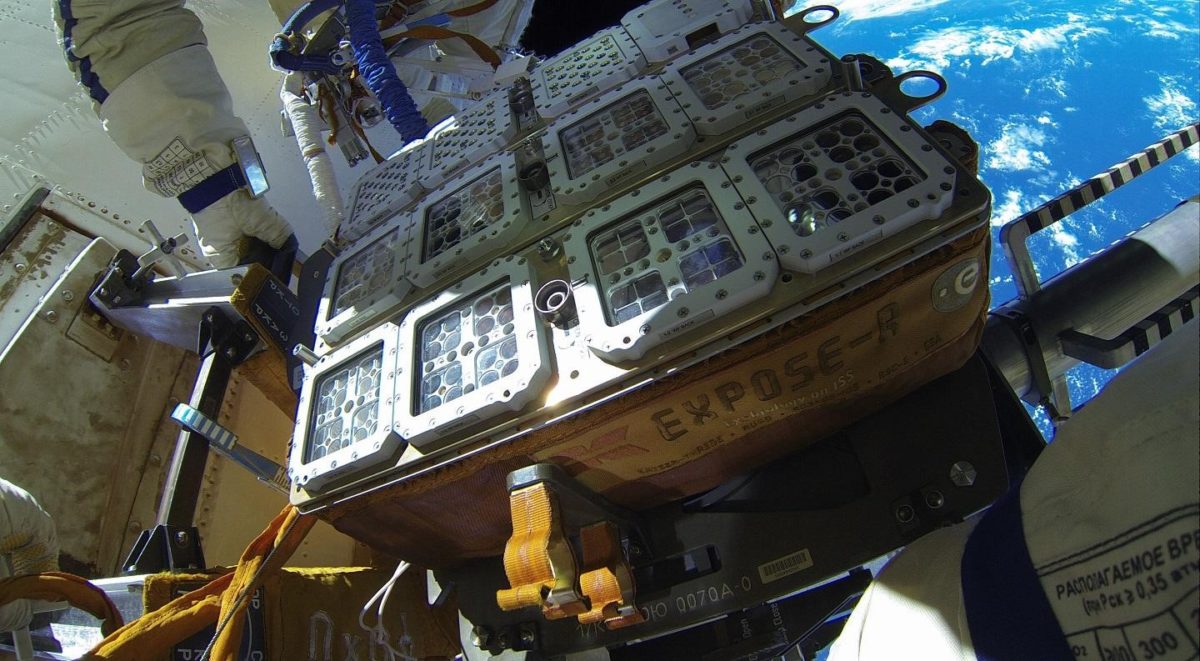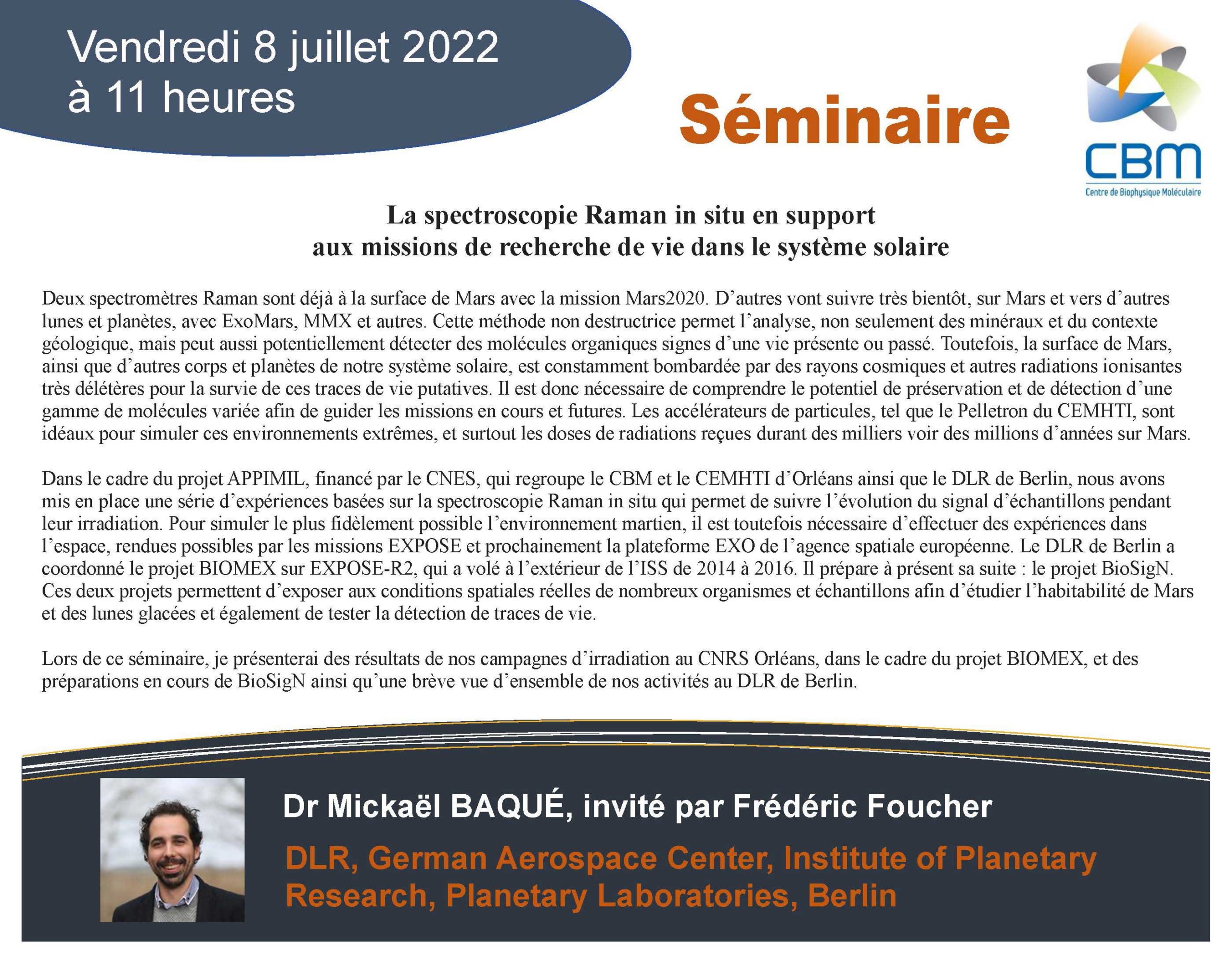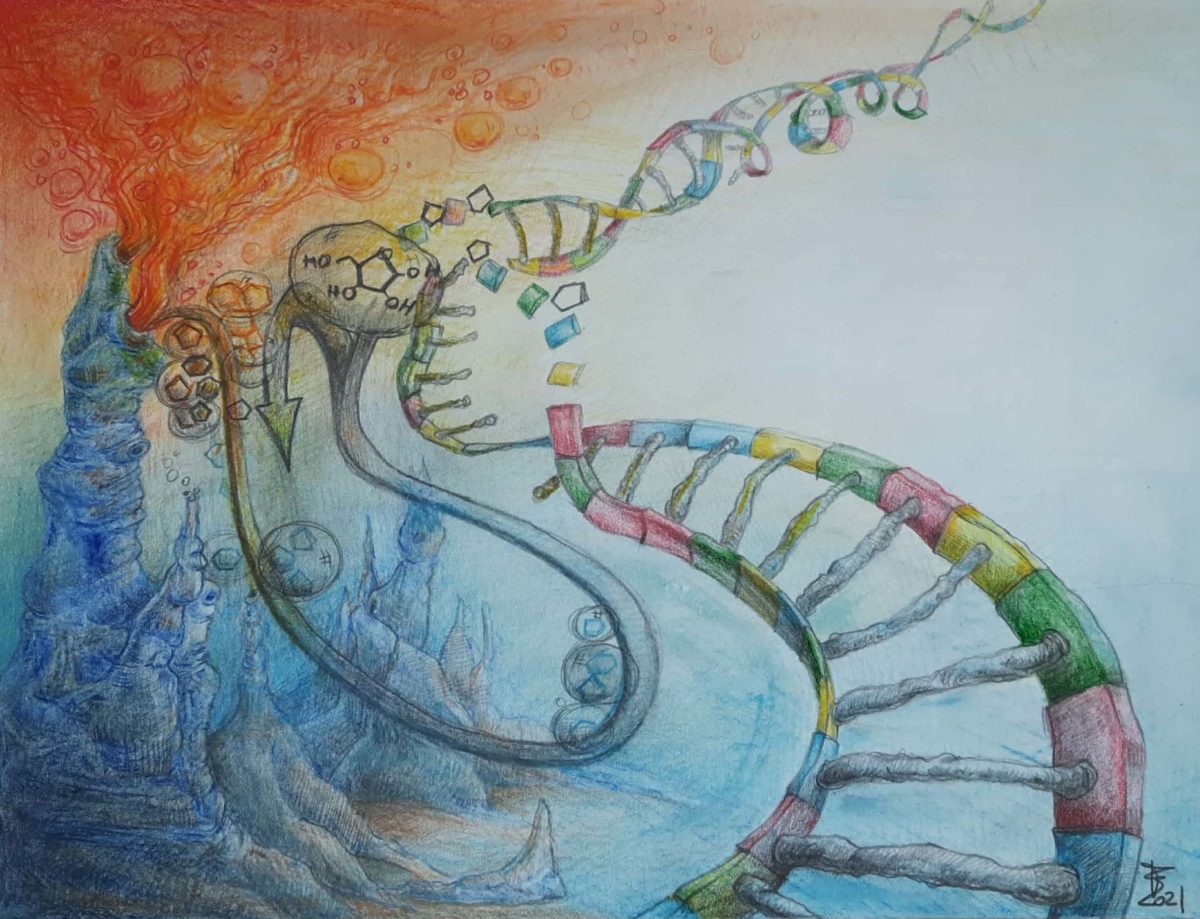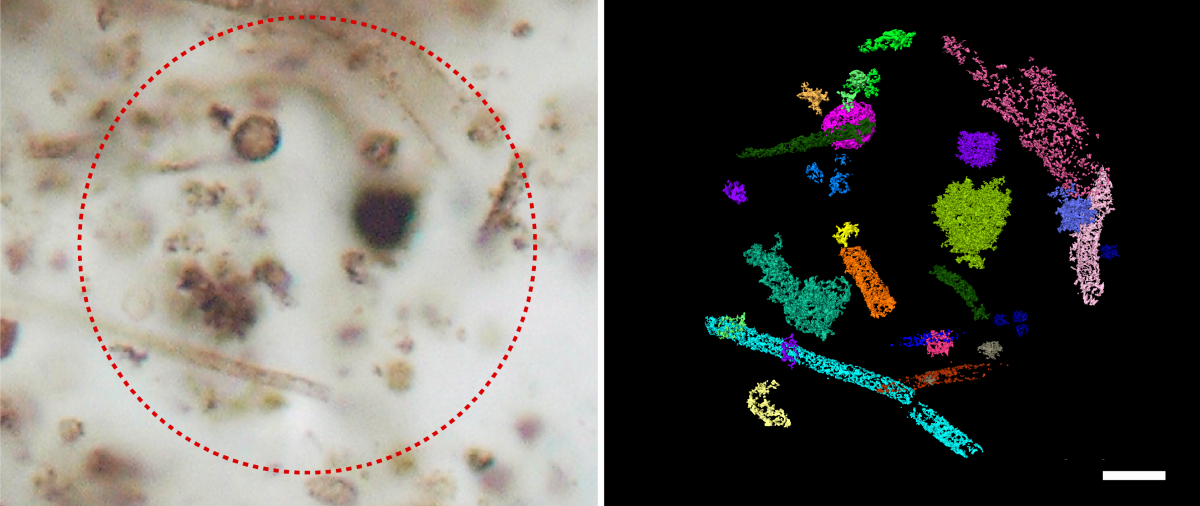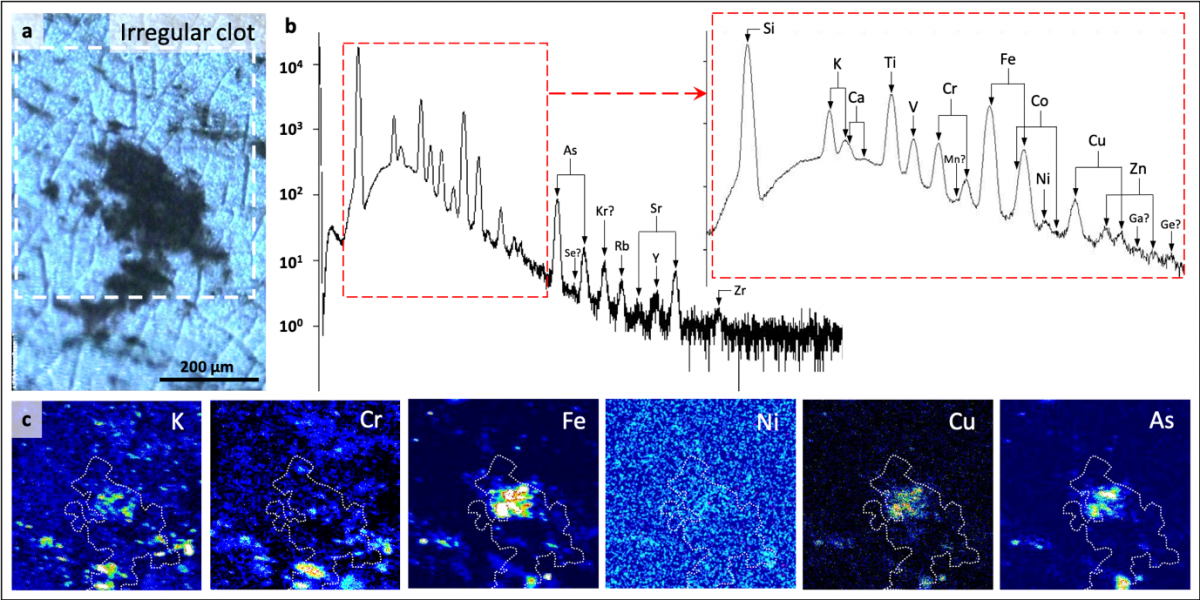Chlorophyllin, beta-carotene, melanin, chitin, cellulose, naringenin and quercetin: these exotic-sounding compounds are biomolecules that allow certain organisms to live in extreme environments. They are thus prime targets for the search for life on Mars. In order to assess their resistance to Martian conditions, an experiment called BIOMEX, for BIOlogy and Mars EXperiment, was carried out on the exterioir of the International Space Station (ISS).
The molecules were mixed with Martian soil analogs before being exposed to solar radiation outside the ISS for 469 days. Back on Earth, they were analyzed by Raman spectroscopy at the German Aerospace Center (DLR) in Berlin.
Raman spectroscopy analyses the molecular and mineralogical composition of a sample. Compatible with robotic space missions, it is one of the key techniques for searching for traces of life on Mars. NASA's Perseverance rover currently exploring Jezero Crater is equipped with two Raman spectrometers, and ESA's future ExoMars mission will also use one to aid detection of possible biosignatures on Mars in 2030.
The BIOMEX experiment involved many researchers, including members of the Exobiology team at CBM, Olréans. The results, published in the Science Advances, reveal that these biomolecules are resistant to Mars conditions because the minerals composing the Martian soil have a protective effect against UV. Most importantly, the study shows that these molecules could be identified without difficulty on Mars by Raman spectroscopy.
Biosignature stability in space enables their use for life detection on Mars
Mickael Baqué,Theresa Backhaus et al.
Science Advances, Vol 8 -DOI: 10.1126/sciadv.abn7412

